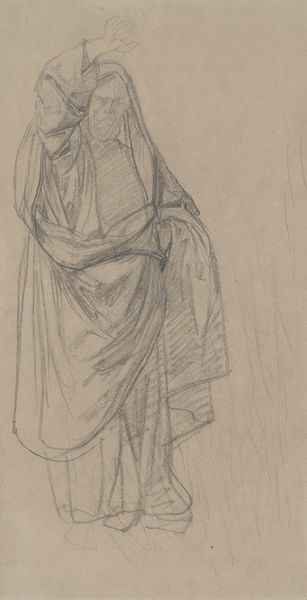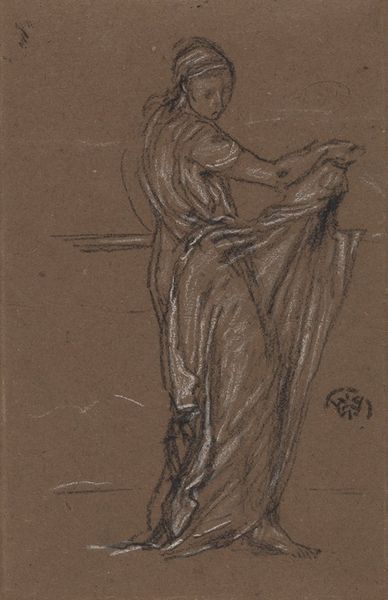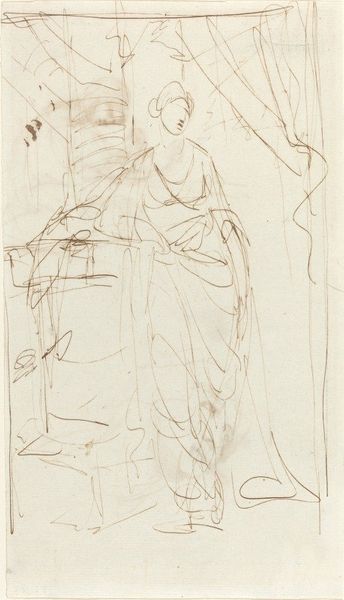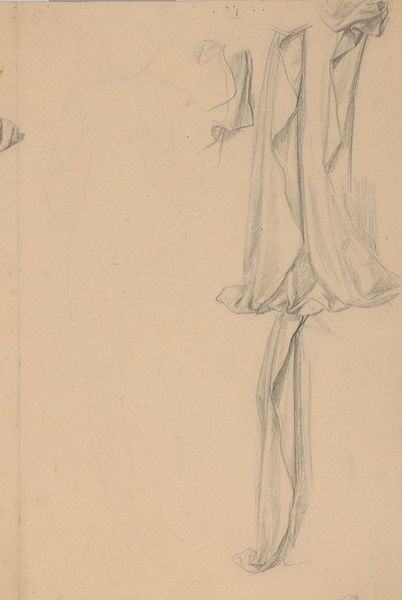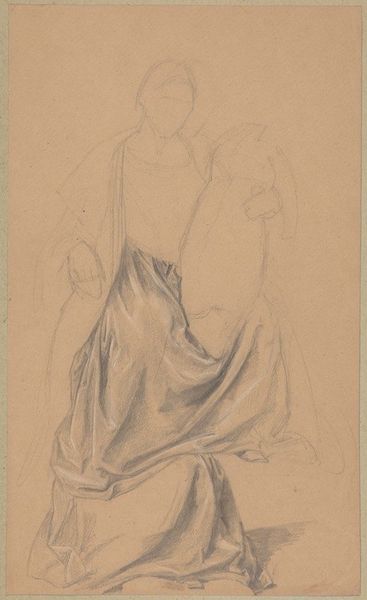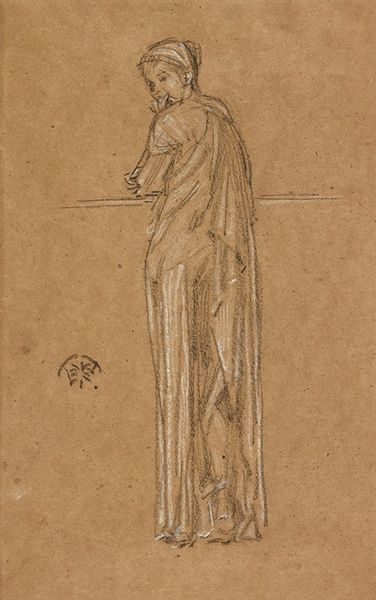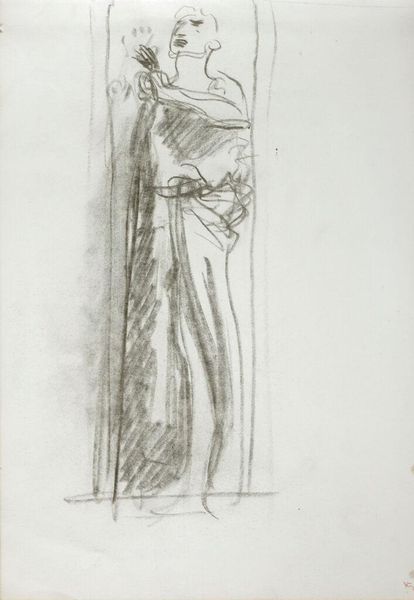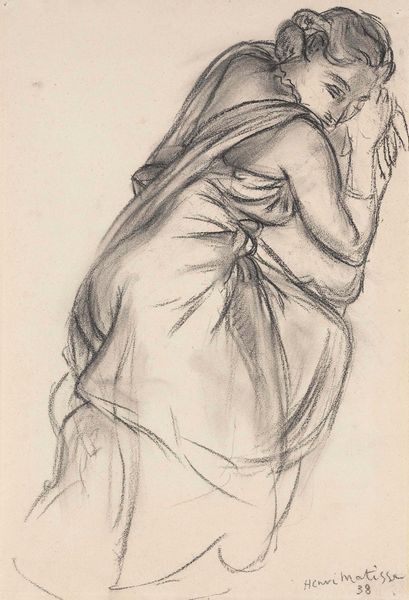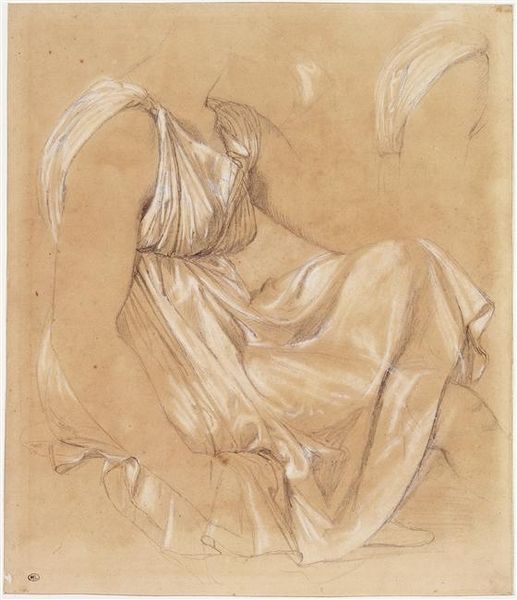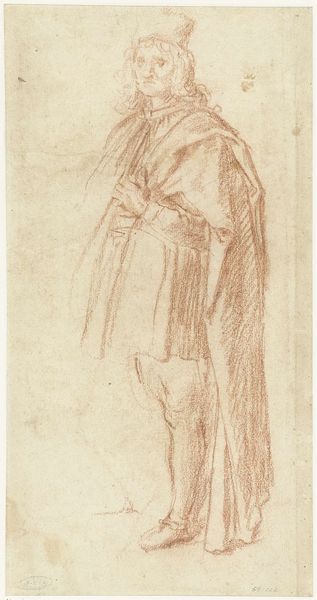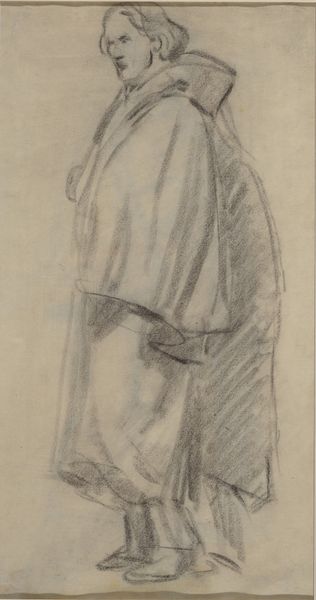
Femme drapée de face, tenant un enfant sur la hanche droite 1886 - 1889
0:00
0:00
Copyright: Public Domain: Artvee
Pierre Puvis de Chavannes made this sketch of a draped woman holding a child, using graphite, black chalk, and white chalk on paper. It likely dates from the late 19th century, when the French Third Republic was attempting to reconcile the radical politics of the French Revolution with more conservative social norms. Puvis de Chavannes was known for his allegorical paintings and murals, often commissioned for public buildings. His aesthetic drew from earlier traditions of classicism. The image here invokes classical antiquity, with its idealized female figure draped in flowing robes. We might ask, what is the social function of this classical imagery? Does it evoke timeless ideals? Or is it more reactionary, appealing to an imagined past? Scholars have argued that Puvis de Chavannes's paintings embody an official ideology of republicanism. Researching the political history of France at the time and the institutional history of the French academies, can help to explore that question.
Comments
No comments
Be the first to comment and join the conversation on the ultimate creative platform.
